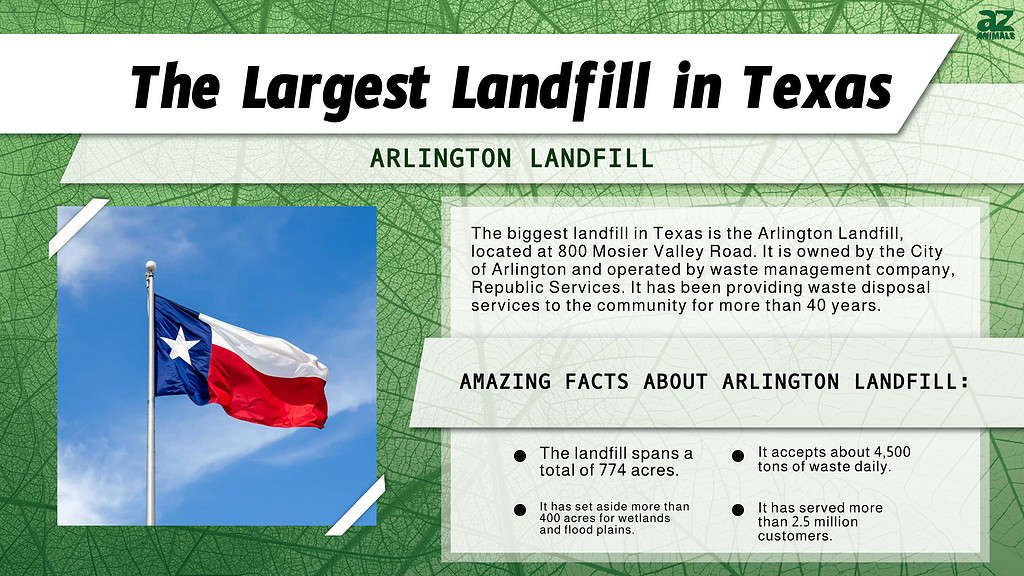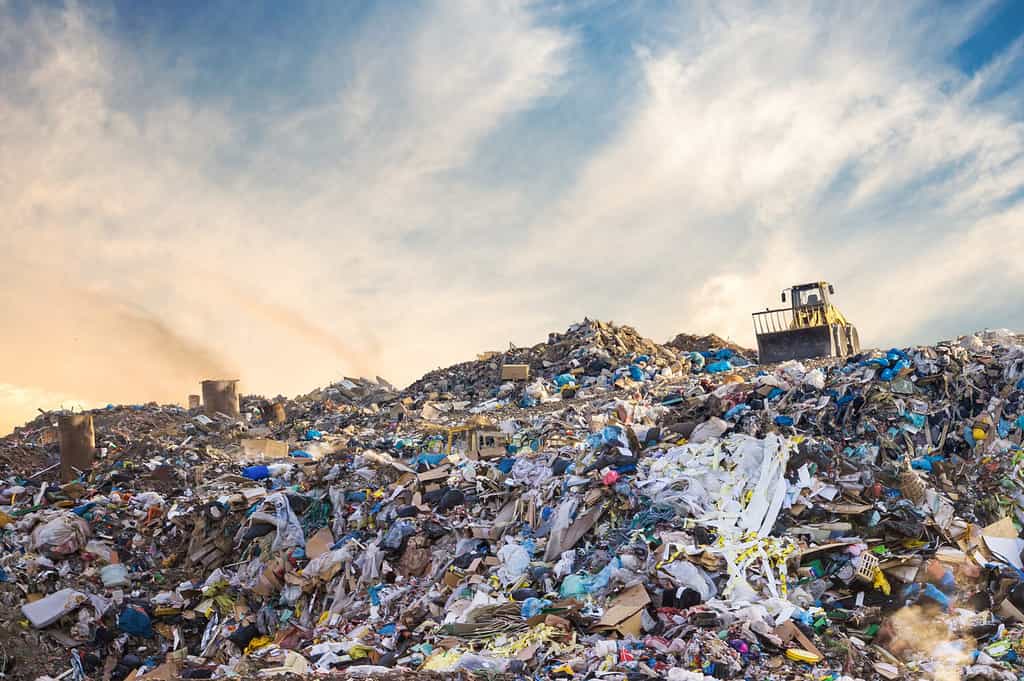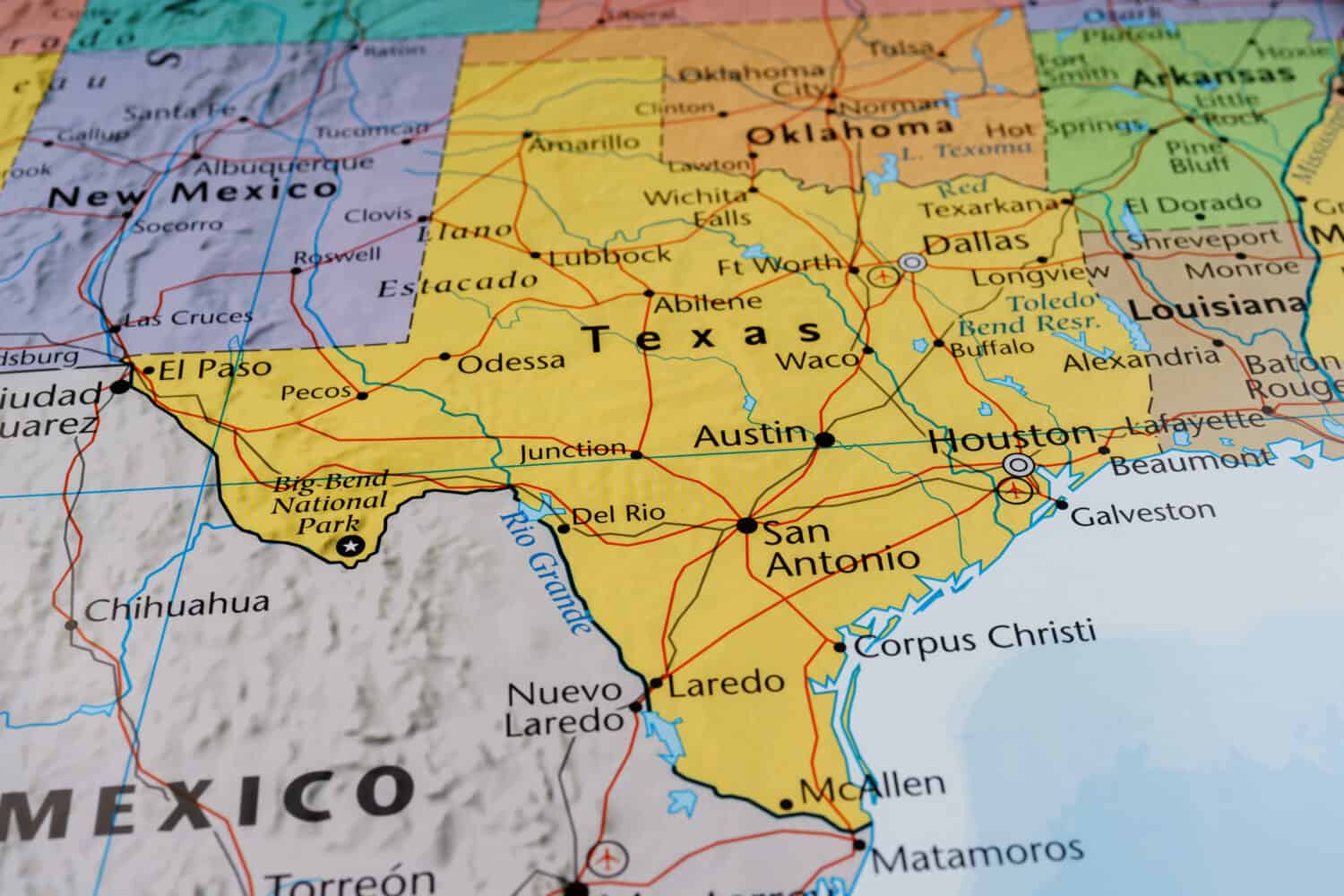Deep within the heart of Texas lies an imposing presence — a monumental testament to our collective waste. Spanning acres and housing tons of discarded materials, this huge Texas landfill is one of the largest in the U.S. In this article, we delve into the secrets of this colossal landfill, shedding light on the environmental dilemmas it poses and the potential risks it presents to our delicate ecosystem.
Many people think the McCarty Road Landfill in Texas is the largest landfill in the state. While this landfill is impressive in size at 464 acres, another landfill surpasses it by hundreds of acres. Let’s venture forth to discover the harrowing truths about Texas’s most expansive waste repository.

What Is the Largest Landfill in Texas?

There are 128 landfills in Texas as of 2023.
©vchal/Shutterstock.com
The Arlington Landfill, nestled at 800 Mosier Valley Road in Arlington, Texas, is the largest landfill in the state. On average, it accepts approximately 4,500 tons of waste per day, and it spans a total of 774 acres. Operated as a sanitary landfill, it adheres to rigorous regulations designed to minimize environmental impact and ensure responsible waste disposal.
The Arlington Landfill provides waste disposal services to the community and has been serving it for over 40 years. The landfill has set aside more than 400 acres for wetlands and flood plains. The landfill has served over 2.5 million customers.
What Is the Primary Purpose of the Arlington Landfill?
Its primary purpose is to serve the Arlington community, potentially extending its reach to neighboring areas. Accommodating a wide range of waste, from bulky items to tires and general household trash, the landfill is also part of sustainable initiatives. Projects such as land capping and vegetation planting enhance its ecological footprint.
There have been on going efforts to address environmental concerns, particularly regarding air and water quality. Additionally, landfill size and capacity remain subject to change. Therefore, for the most accurate information, turn to official sources and consult waste management authorities.
Who Owns and Operates the Arlington Landfill?
The City of Arlington owns the Arlington Landfill. Republic Services, a waste management company, operates it. Republic Services operates more than 300 active and closed landfills nationwide and prides itself on providing environmentally responsible landfill management. Their team of professionals, including scientists, engineers, and technicians, use science and data to make informed decisions regarding landfill operations.
What Are the Environmental Impacts of the Arlington Landfill in Texas?
Specific details about the environmental impacts of the Arlington Landfill are not directly obtainable. However, landfills in general can have several environmental consequences.
For example, landfills can contribute to air pollution through the release of methane gas, a potent greenhouse gas, as organic waste decomposes. There may also be concerns about the leaching of contaminants into the groundwater from the landfill, potentially impacting water quality. The presence of landfills can also attract scavenger birds, such as seagulls, which can pose challenges for landfill management.
To obtain a detailed understanding of the environmental impacts of the Arlington Landfill, consult official sources. These include the Texas Commission on Environmental Quality (TCEQ) or waste management reports. They provide specific information on the landfill’s operations and their environmental consequences.
How Is the Republic Services Addressing Environmental Concerns of Its Landfills?
As a leading industry expert with more than 300 landfills nationwide, Republic Services recognizes the rising expectations for environmental responsibility. Meeting these expectations requires expertise, advanced technology, and significant resources due to the evolving nature of waste streams.
Republic Services boasts a highly skilled team of over 200 scientists, engineers, and technicians. These experts utilize scientific data to inform decision-making at each landfill. Believing in their role as environmental stewards, Republic Services prioritizes the regeneration of our planet. They employ scientific advancements, innovative technologies, and customized site management plans for each operated landfill. This commitment includes the development and management oversight of landfill gas-to-energy projects.
Where Is the Arlington Landfill Located on a Map?
The Arlington Landfill is situated at 800 Mosier Valley Road in Euless, TX. It’s located north of Lake Viridian and River Legacy Park. It is less than 8 miles from Dallas/Fort Worth International Airport.
What Lives Around the Arlington Landfill?
Arlington landfill’s location near River Legacy Park and Lake suggests the presence of diverse wildlife in the surrounding area. River Legacy Park, which is a short drive from the Arlington Landfill, is home to a variety of plant and animal species. Some of the wildlife in and around the park include:
Birds: River Legacy Park has a diverse bird population. Visitors may spot birds such as hawks, owls, herons, egrets, woodpeckers, and a variety of songbirds.
Mammals: There have been reported sightings of mammals like bobcats and coyotes in the area. Other common mammals in the region include squirrels, rabbits, raccoons, and opossums.
Reptiles and Amphibians: River Legacy Park provides a habitat for reptiles and amphibians, including snakes, turtles, lizards, and frogs. The western narrow-mouthed toad also lives in the park.
Fish: The park is located near the Trinity River, which offers opportunities for fishing. However, there is a fish consumption advisory in place for this section of the river.
Insects and Invertebrates: River Legacy Park supports a variety of insects and invertebrates, including butterflies, dragonflies, spiders, and beetles.
It is important to respect the wildlife and their habitats. Keep a safe distance and do not disturb or feed the animals.
For more detailed information about the wildlife near the Arlington Landfill, consult local environmental studies.
In Conclusion
Exploring the largest landfill in Texas unveils a sobering reality about the urgency for sustainable waste management practices. From the release of harmful gases and contamination to the disruption of sensitive ecosystems, landfills make addressing our waste crisis a necessity. It is crucial to acknowledge the immense challenge that comes with waste disposal. However, it is equally important to foster innovation and promote responsible waste management methods.
By embracing recycling initiatives, advocating for reduced consumption, and supporting renewable energy alternatives, the city of Arlington is working to mediate the dangers associated with their landfills and strive towards a cleaner, healthier future. Let this exploration of the largest landfill in Texas serve as a catalyst for change, igniting a collective determination to prioritize our planet for the benefit of generations to come.
Thank you for reading! Have some feedback for us? Contact the AZ Animals editorial team.








